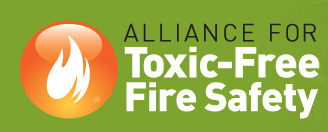  |
|||
October 12, 2011
Dangerous Flame Retardant Chemical Added to CA. Prop 65 List (Berkeley) Chlorinated Tris, or TDCPP, the same chemical removed from use in baby pajamas in 1977 due to concerns about carcinogenicity, was officially listed as a cancer-causing chemical by the State of California on the “Prop 65 list” today. Though removed from pajamas, Chlorinated Tris is the most commonly used flame retardant in foam in U.S. furniture and baby products, according to recent studies. The listing will not ban the chemical from use but could result in a labeling requirement for consumer products containing the chemical. An outdated California flammability regulation is partly to blame for the common use of chlorinated Tris. Environmental health advocates are trying to change this obsolete regulation. Chemical industry lobbying and campaign contributions appear to have influenced California regulators and legislators to keep the toxic rule. The Carcinogen Identification Committee, a scientific committee appointed by the Governor, added TDCPP (chlorinated Tris) to the Proposition 65 list, which requires the publication of a list of chemicals, known to the state to cause cancer or reproductive toxicity. The U.S. Consumer Product Safety Commission and the U.S. Environmental Protection Agency have reported that chlorinated Tris poses a cancer hazard; but the companies that manufacture this chemical say there is no problem. “Flame retardants like Tris leach out of furniture and end up in the dust in our homes. We unknowingly inhale and ingest Tris into our bodies. This is the same chlorinated Tris flame retardant that our research helped remove from baby pajamas in 1977 is back in use,” said Arlene Blum PhD, a Visiting Scholar at the University of California, Berkeley Chemistry Department and Executive Director of the Green Science Policy Institute. “When we tested 100 baby products and 100 couches, we found dangerous levels of Tris in the samples more often than any other flame retardant.” “The listing of chlorinated tris on Prop 65 is a public health victory. Widespread exposure to this chemical, now officially identified as a cancer-causing chemical, is a threat to vulnerable populations. This listing should result in labeling requirements for products that contain dangerous levels of this chemical. ” said Dr. Sarah Janssen, Senior Scientist at the Natural Resources Defense Council. Kathy Curtis, LPN, of Clean and Healthy New York, comments, "When chemical makers produce a chemical like Tris to replace other dangerous chemicals, this underscores the need for federal chemical policy reform. Meanwhile, states like California are taking the lead to protect people from these persistent chemicals." A study of men living in homes with high amounts of the chlorinated Tris chemical in household dust found they had reduced sperm counts and altered levels of hormones related to fertility and thyroid function. High levels of Tris in dust is associated with decreased serum free thyroxine levels. Because thyroid hormone insufficiency can have serious adverse effects on a number of vital physiologic functions, even chemicals that cause only a subtle shift in thyroid hormone levels should be screened carefully in terms of toxicity and societal impact. In 2006, the CPSC released a Risk Assessment of Flame Retardant Chemicals in Upholstered Furniture Foam, which included chlorinated Tris. This CPSC report states that upholstered furniture manufactured with TDCPP (chlorinated Tris) treated foam might present a hazard to consumers, based on both cancer and non-cancer end points.The CPSC estimate of children‚s exposure to TDCPP (chlorinated Tris) from treated furniture was five times higher than the agency‚s acceptable daily intake. Moreover, according to leading fire scientists, the use of Tris (and the other organohalogen flame retardants) in furniture and baby products, to meet the California furniture flammability standard, does not actually provide any fire safety benefit. The treated products burn after a few seconds and the chemicals combust to form the toxic gases that cause most fire deaths and injuries.
Resources Sarah Janssen's NRDC Blog Green Science Policy Institute Alliance for Toxic Free Fire Safety
|
|||




